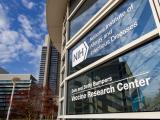Nov 2, 2011 (CIDRAP News) – Though much of the nation's ability to detect potentially catastrophic disease outbreaks, manmade or otherwise, is in the hands of state and local agencies, the federal government still lacks a comprehensive view of the role it plays in biosurveillance, the Government Accountability Office (GAO) reported.
Legislation enacted in the wake of the 9/11 Commission's findings directed the GAO to report on biosurveillance at all levels, and its Oct 31 report to Congress is the third to address the state of the nation's systems. In October 2007, Homeland Security Directive 21 called for more timely detection and better situational awareness for the nation's biosurveillance system.
In June 2010, the GAO recommended that the National Security Staff (NSS), the White House's security policy policy-making group, develop a national biosurveillance strategy, and in August 2011 the NSS said it had .created a biosurveillance Sub-Interagency Policy Committee to serve as a focal point in ongoing efforts to flesh out a national strategy, according to the GAO's 101-page report.
However, the GAO said the federal government has not comprehensively assessed state and local jurisdictions' ability to contribute to national biosurveillance, which would provide key information about baseline capacities and gaps.
To explore issues surround nonfederal biosurveillance capabilities, GAO investigators interviewed and surveyed public health, agriculture, and wildlife officials in seven states: Utah, Colorado, New Jersey, California, Delaware, North Carolina, and Mississippi. They also got feedback from public health officials in two cities that are at increased bioterror risk, New York and Washington, D.C. They also spoke with officials about biosurveillance capacity in tribal and insular areas.
GAO investigators asked questions about federal activities that support state and local biosurveillance, which includes grants and cooperative agreements, technical and material assistance, guidance, and information sharing.
Nearly all respondents said grants and cooperative agreements are the most important forms of federal support for the activities. Many of the public health officials said the financial assistance is also useful, because it provides guidance on federal priorities and goals.
Some wildlife officials said surveillance for certain diseases, such as avian influenza and chronic wasting disease, would not be possible without the federal grants and cooperative agreements.
Several respondents said federal training opportunities helped enhance and standardize lab testing and other biosurveillance methods and said federal subject-matter experts and lab resources made them better prepared to handle outbreaks.
When asked about challenges related to biosurveillance activities, respondents mentioned that state policies can hinder them from filling new positions, attending national meetings and conferences, and participating in online forums for training. Several reported workforce shortages and difficulties hiring and retaining qualified employees.
Funding instability also ranked high in biosurveillance challenges. Most said states provide little or no support for surveillance, leaving them to rely on federal funding. And because public health officials don't know how much funding they'll get from year to year, long-term planning is difficult, many noted.
State officials told GAO investigators that a national biosurveillance assessment would help identify best practices in biosurveillance and help guide resource allocations. They acknowledged, though, that a comprehensive assessment would be a complex task, not just due to the size of the project, but also because the vision and mission for the nation's biosurveillance capability is hazy.
The GAO recommended that the Homeland Security Council direct the NSS to ensure that the strategy it is working on leverages existing efforts at the nonfederal level, consider the challenges that different jurisdictions face, and include a framework for developing a baseline and gap assessment of nonfederal biosurveillance capabilities.
Investigators provided a draft of their findings to federal agencies, along with state and local officials who participated in the review. The NSS acknowledged the accuracy of the information, but did not comment on the recommendations. The Department of Homeland Security (DHS) said it is working with the NSS and its Sub-Interagency Policy Committee as a way of supporting its own biosurveillance mission. The DHS also said it supports including nonfederal resources in the national biosurveillance strategy.
See also:
Oct 31 GAO report
Jul 2, 2010, CIDRAP News Scan on US biosurveillance strategy


















